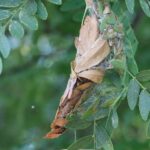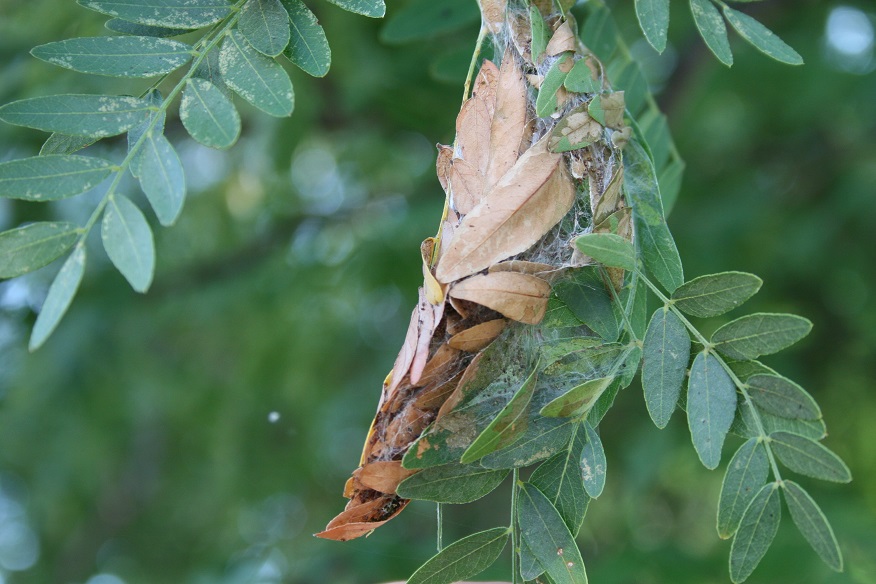
Yes, they might be called “evergreens,” but not even conifers keep their needles forever. Why are they called evergreens? Because the tree holds onto its needles for longer than a year before letting them go. With new needles coming in, the tree appears to always be keeping its needles. It’s not unlike your hair. Your hair is constantly falling out, but new hairs are also constantly growing in (thank goodness!) Needle drop sometimes happens without us even noticing, since it’s the inner needles that fall. Needle drop in Eastern White Pines, like the one pictured above, tends to be more obvious than other species.
Here is a handy chart from the University of Nebraska’s Backyard Farmer of how long common pine trees grown in Nebraska hold onto their needles:
Here is a handy chart from the University of Nebraska’s Backyard Farmer of how long common pine trees grown in Nebraska hold onto their needles:
TWO YEARSEastern white pine Jack pine (2-4 yrs.) Scotch pine (2-4 yrs.) | THREE YEARSKorean pine Japanese Black pine (3-5 yrs.) Japanese Red pine Japanese White pine Lacebark pine Macedonian pine Ponderosa pine | FOUR YEARSAustrian pine Red pine Swiss Stone pine | FIVE YEARSBosnian pine Mugo pine |
When do I need to worry about needle drop?
If a tree is stressed from things like drought, root damage, insects or diseases, needle drop will be exacerbated and you’ll want to work to reduce those stressors. That’s what we’re here for! A Certified Arborist can diagnose the issue or simply give you the reassurance you’re looking for that your tree is healthy and happy just doin’ it’s thang.
If your tree is starting to look like the photos below, you’ll definitely need to investigate further. The trees below are suffering from Diplodia tip blight and Dothistroma needle blight – both of which can be remedied with a series of fungicide sprays in the spring. If you aren’t sure, it never hurts to set up a free consultation to put your mind at ease when you’re trying to protect your trees.
If your tree is starting to look like the photos below, you’ll definitely need to investigate further. The trees below are suffering from Diplodia tip blight and Dothistroma needle blight – both of which can be remedied with a series of fungicide sprays in the spring. If you aren’t sure, it never hurts to set up a free consultation to put your mind at ease when you’re trying to protect your trees.
Not normal!

Eastern White Pine suffering from Diplodia Tip Blight, exacerbated by drought. Photo by Ariana Brocious, NET News

Austrian Pine suffering from Dothistroma Needle Blight. Photo: Jill O’Donnell, MSU Extension.






